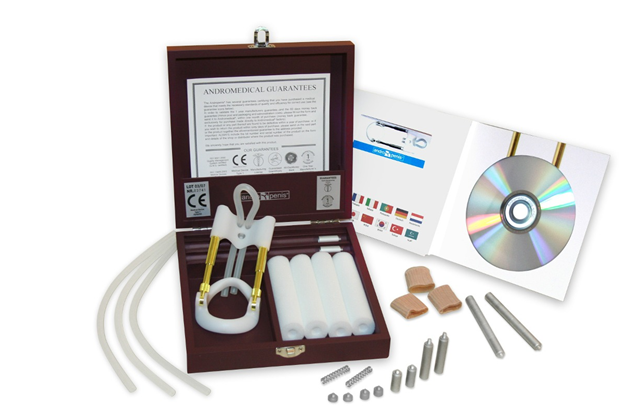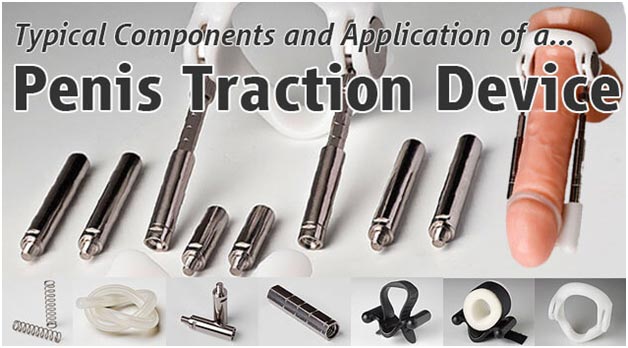Extend Your Penis Using The Stretching Method
Extend Your Penis – Penile size varies among men of different ethnic backgrounds. Comprehensive studies conducted by condom manufacturers and researchers provide insights into penis size and length. Many men perceive their penis as short, but it often falls within the normal size range. Based on numerous published charts, scientific articles, and self-reported online surveys, 95% of Caucasian men fall into the following size categories:
Average Penis Size
- The average length of a flaccid penis is between 3.4 inches and 3.7 inches (8.6 cm and 9.3 cm).
- Average length of an erect penis is between 5.1 inches and 5.7 inches (12.9 cm and 14.5 cm).
- The average circumference of an erect penis is between 3.5 inches and 3.9 inches (8.8 cm and 10.0 cm).
Factors Affecting Penis Length
Penis shortening can result from weight gain and the accumulation of fat in the pubic area. This leads to the visual shortening of the penis. Obesity increases the risk of erectile dysfunction. Overweight men who complain of loss of length may have insufficient blood flow to achieve adequate rigidity.

Extend Your Penis
Hormonal and Genetic Factors
Less common explanations for penis shortening include hormonal imbalances, particularly low testosterone levels. Congenital conditions such as inborn cordae, where the penis is tethered, and chromosomal anomalies can also contribute. Scarring from Peyronie’s disease, characterized by the development of plaques within the penis, is another cause. Age-related atrophy, due to declining testosterone and less frequent erections, can also result in a slight decrease in penile length. Prostate surgery may damage nerves, leading to penile shortening.
Importance of Medical Evaluation
Men concerned about penile size should consult a urologist specializing in sexual medicine to rule out medical causes. A thorough evaluation ensures that underlying health issues, such as hormonal deficiencies or Peyronie’s disease, are identified and treated appropriately. This medical assessment is crucial for determining the best course of action and providing peace of mind.
Age and Concern Over Penile Size
A significant number of men worried about penile size are young men in their late teens, 20s, and early 30s, as well as men older than 60. Concerns about penis size can vary based on age, with younger men often worried about appearance and older men concerned about functionality and health. Addressing these concerns requires a tailored approach.
Tailored Approaches to Treatment
There is no one-size-fits-all approach to assessing and managing concerns about penile size. For example, if a decrease in penile size and girth is caused by a variant of Peyronie’s disease, known as an “hourglass deformity,” it can be effectively treated at specialized centers. Addressing these issues often involves increasing the frequency of sexual interactions, correcting hormonal imbalances, and supplementing with antioxidants.
Surgical Options for Penis Enlargement
Surgical management of a short penis is limited and specific. Liposuction and scrotal skin transposition are options for men with abnormal penis positioning. Cutting the suspensory ligament with a traction system has been used in some cases to lengthen the penis, though its effectiveness varies. This procedure’s success depends on precise patient selection and the absence of postoperative scarring.
Non-Surgical Techniques and Their Efficacy
Non-surgical techniques such as fat injections, fat grafts, and silicone injections have been attempted to increase penis size. Fat injections are temporary, as most fat cells dissolve over time. Fat grafts have been successful in increasing size and are occasionally performed in reconstructive surgery. Silicone injections, however, often result in complications, including an uneven penis surface, skin erosion, and subcutaneous tissue scarring.
Addressing Penile Shortening Post-Surgery
A decrease in penile length after prostate surgery can be managed by increasing sexual activity frequency, addressing underlying hormonal issues, and supplementing with antioxidants. Shortening of the penis after prostatectomy is believed to be due to “free radicals,” a damaging form of oxygen produced after nerve damage. Managing these factors can help maintain or restore penile length.
Exploring Non-Invasive Solutions
For those wary of surgical interventions, non-invasive methods offer alternative solutions. Penis extenders, vacuum devices, and traction therapy can help stretch and potentially increase penis length. These devices should be used under medical supervision to ensure safety and effectiveness. Regular use, combined with proper technique, can lead to noticeable improvements over time.
Psychological Impact and Support
Men experiencing concerns about penis size often face significant psychological distress. Counseling and support groups can provide emotional relief and practical advice. Understanding that many men share these concerns can help reduce feelings of isolation and anxiety. Psychological support, combined with medical treatment, offers a holistic approach to addressing penis size issues.

Components of Penis Extender Kits
Regular Home Systems for Penis Enlargement
Three common home methods are used to elongate the penis without medical supervision or proven efficacy:
- Penile Tape: Also used in foreskin restoration.
- Penis Weight System: Utilizes weights to apply tension.
- Penile Stretching with Controlled Stretch Devices: Uses devices like the Andropenis.
All these methods rely on the idea that applying tension to the penis will stimulate tissue growth, allowing men to achieve gains in length and girth.
Penile Stretching with Devices
Penile stretching employs flexible devices such as the Andropenis, which has been used to treat Peyronie’s disease (a condition causing curvature of the penis). A study published in the Journal of Sexual Medicine indicated a mild increase in penis length after daily use of stretchers for treating Peyronie’s disease. Subjectively, all men noted reduced curvature (10-40 degrees), increased penile length (1-2.5 cm), and improved girth in areas of narrowing. Objective measures showed a reduced curvature in all men from 10-45 degrees, with an average reduction of 33% (51-34 degrees).
There were no adverse events, including skin changes, ulcerations, numbness, or reduced rigidity. When supervised by a urologist specializing in sexual medicine, this stretching method can be safe. However, unsupervised and unsafe stretching treatments have led to bruising, vein thrombosis, and nerve damage, especially when weights are used.
Importance of Penis Size
Penis size is a significant concern for many men, affecting those of all ages. Length and girth are common worries. Penile development and growth are complex processes influenced by genetics, hormones, and environmental factors. As with any health concern, men worried about their penis size should consult with a urologist trained in sexual conditions and diseases.
Risks and Considerations
Using penile extension devices without professional guidance can be risky. Bruising, blood clots, and nerve damage are potential hazards, particularly with weight-based systems. It’s crucial to approach these methods cautiously and seek medical advice to avoid serious complications.
Conclusion
Penile extension devices offer a potential solution for men seeking to increase their size. However, safety and effectiveness vary, and professional supervision is recommended. Consulting with a specialist ensures that the chosen method is appropriate and minimizes health risks.



